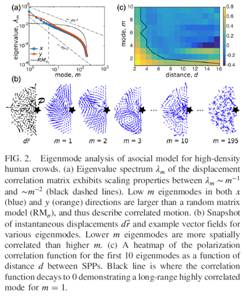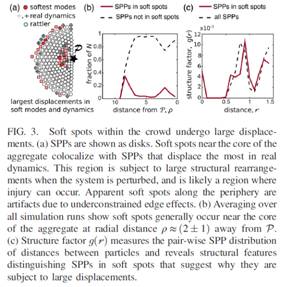科学家发现隐藏在显眼地方的危险
11月23日,来自瑞典乌普萨拉大学数学系集群行为研究组的David Sumpter教授与其博士生Arianna Bottinelli以及哈佛大学的Jesse L. Silverberg在PRL发表了题为:Emergent Structural Mechanisms for High-Density Collective Motion Inspired by Human Crowds的研究论文。大规模人群的集体运动往往取决于他们的密度。在极端情况下,如重金属音乐会和黑色星期五的销售活动,运动主要由身体的相互作用主导,而不是传统的社会规范。作者构建了一个活性物质模型来模拟当大规模人群聚集在一个共同的兴趣点的情形,他们的方法能够在灾难来临之前预测在大规模的集会中发现危险区域。
在接受采访时David Sumpter说,下一步将这些技术应用于实时视频数据。如果可以使用计算机视觉跟踪人群,那么我们的分析工具可以在潜在危险出现之前提醒、警示活动的规划者,以避免或者降低大规模人群中灾难。
摘要:
Collective motion of large human crowds often depends on their density. In extreme cases like heavy metal concerts and black Friday sales events, motion is dominated by physical interactions instead of conventional social norms. Here, we study an active matter model inspired by situations when large groups of people gather at a point of common interest. Our analysis takes an approach developed for jammed granular media and identifies Goldstone modes, soft spots, and stochastic resonance as structurally driven mechanisms for potentially dangerous emergent collective motion.



文章链接:http://journals.aps.org/prl/abstract/10.1103/PhysRevLett.117.228301
相关报道链接:
https://www.sciencedaily.com/releases/2016/11/161122121522.htm
https://scirate.com/arxiv/1606.08835/scites


